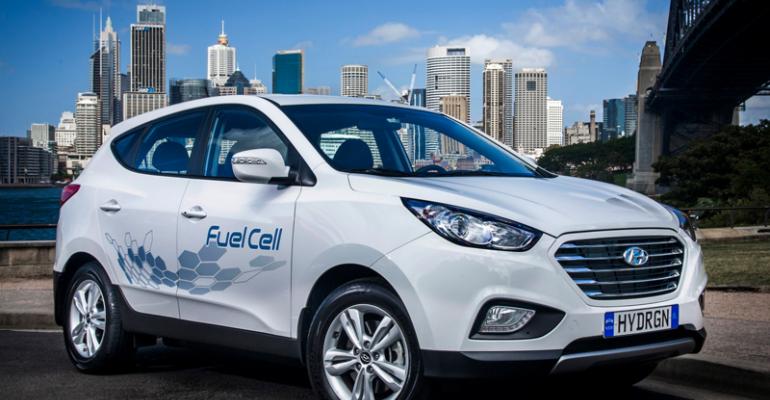Pressure is building among regulators in the European Union to accelerate the growth of hydrogen-fuel-cell technology in the fight for cleaner urban air.
Just as EU members discuss ways of reducing carbon-dioxide emissions from cars and light-commercial vehicles, the lobbying group Hydrogen Mobility Europe (H2ME) has hosted a roundtable of experts to highlight the need for local authorities, large industrial companies and global automakers to deploy zero-emission mobility as an economically attractive solution requiring no compromise to operational requirements.
The Brussels roundtable, held in partnership with the European Commission’s Fuel Cells and Hydrogen Joint Undertaking (FCH JU) and Hydrogen Europe, follows a European Parliament vote on setting tougher CO2 emissions limits for cars and vans, in line with the policy aim of driving the adoption of low- and zero-emission vehicles. As part of the legislation, the EC will treat both hydrogen-fuel-cell electric vehicles (FCEVs) and battery-electric vehicles (BEVs) as zero-emission vehicles.
The H2ME project is attempting to create the world’s largest network of hydrogen refueling stations with 49 stations to be funded, of which 15 already are operating. The project has delivered 360 vehicles to end users covering nearly 1.2 million miles (2 million km). It also has tried to create attractive ownership models for FCEVs used as taxis, captive fleets and in cities with strict environmental targets.
Proponents of hydrogen energy point out the gas can be generated from a wide variety of sources before use in vehicles, with water vapor being the only byproduct. At the same time, range and refueling times are comparable to those of conventional gasoline and diesel cars.
While interest may be growing in FCEVs, municipalities are waiting for greater direction, and funding, from EU legislators to provide clear guidelines for rolling out hydrogen fueling stations and FCEV fleets.
Mirela Atanasiu, head of operations and communications for FCH JU, says: “The H2ME projects are of particular importance for the FCH JU as they bring together various national hydrogen transport initiatives, which vary in aim and scope. The (roundtable) allows us to take this one step further by connecting these initiatives with the concrete needs of Europe’s regions and cities.
“This demonstrates the potential of hydrogen-fueled road transport as a solution to the need for viable and competitive alternatives to fossil fuels at all levels – regional, national and pan-European.”





